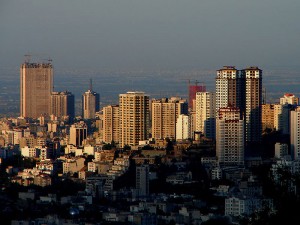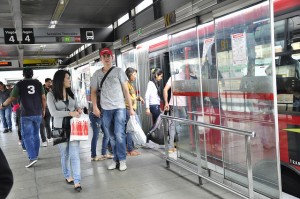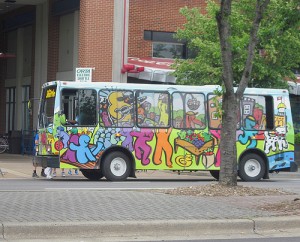By Russell Glynn
In urban and regional planning practice, sustainability takes on an ever-expanding meaning, in some ways removing itself from the connotations of environmentalism and ecological stewardship. While these tenants of the term still ring true through the morphing application of what has become a buzzword in planning over the last half-century, sustainability has come to incorporate entire systems necessary for the vitality of any given city. In this way, sustainability is not apart from planning, sustainability is planning and planning is sustainability. The promises of planning are ripe with sustainable undertones, as planners and policymakers hope to tackle increasingly complex issues in a way that fosters the continuation of a certain quality of life for city residents. It is this continuation of a quality of life through the systems at play, those ecological, social, political, and economic, that sustainability has blossomed into an important ideology at the fore of modern planning efforts.
There may seem to be a contradiction of sorts in this definition, pinning sustainability and economics or politics in line with one another can, and did for some time, seem blasphemous in the green minds of today’s urbanites. However, as this piece will examine, the translation of sustainability practices and concepts to economic development signals the dawn of a new framework in planning and government. With a borrowed concentration on growth and efficiency, sustainable economic development models, or “smart growth initiatives” as they are often branded, have shown promising signs across the globe and arguably offer a more effective path to a desired quality of life than those considered “traditional” by the modern planner (Portney, 2003).
The necessity of economic growth or development in urban areas is inherently part of what makes a city vibrant, livable, and even healthy. In approaching sustainability through economics, it is important to recognize that not only is it impossible to halt economic growth, but that hypothetically doing so can and would have consequences counterproductive to sustainable goals. Thus, economic development must be viewed more as a tool to a sustainable end, rather than an undesired, unavoidable evil. This isn’t to say that “traditional” forms of economic development should be cheerily welcomed across the globe. As discussed by Portney (2003), “negative or deleterious environmental and social effects” are regularly a product of “adherence to mainstream approaches to economic development” (p. 4). The reality that the global market naturally promotes economic growth that places extreme burden on ecological systems is particularly salient in the developing world. This pattern or cycle has been acknowledged by structural adjustment programs like the IMF or World Bank since the late 1970’s and eventually created the “ecodevelopment” framework that has been reimagined and reintroduced countless times over the last forty years (Portney, 2003).
Sustainable development as a method of fostering growth has witnessed relatively widespread practice and success, particularly in the developing world (Suzuki, Datsur, Moffatt, Yabuki & Maruyama, 2010). It has been argued by a number of practitioners and academics (Portney, 2003; Veisi, Liaghati, Fakghradin & Edizadehi, 2012) that those sustainable development frameworks with the greatest promise explicitly incorporate economic growth. This incorporation can be seen on vary scales, ranging from the countrywide initiatives of federal governments or the IMF to the planning policies on a community level. Common throughout, however, is a particular attention given to the context of a plan and the economic climate under which sustainable development practices may exist. With this reality, we can examine a number of successful examples of “smart growth” and sustainability initiatives that give the essence of “real world” application under remarkably different conditions.

Tehran is the epicenter of Iran’s rapidly expanding urban population.
Source: Wikimedia Commons, contributor Hamed Saber.
In the developing world, economic motivators for sustainable development practices have often been applied. A study conducted by Veisi et al. (2012) found that the use of economic instruments (subsidies, taxes, and overall trends) in implementing sustainable development practices in Iran was particularly effective in the country’s governing institutions. While a need for capacity building was deemed necessary in order for the overall success of sustainable development policy, a commonality among countries like Iran, the applicability and appeal of economically incorporated sustainability was promising.
More straightforward applications of sustainable development in the developing world come from Emfuleni, South Africa and Curitiba, Brazil. In Emfuleni, economic savings was a clear motivator for investment in sustainable water infrastructure, as a $1.8 million dollar investment by utility companies has saved the city $4 million each year since (Suzuki et al., 2010, p. 24). In a similar vein of infrastructural improvement, the construction of a bus rapid transit system in Curitiba has allowed for sweeping decreases in air pollution and traffic congestion, all through what was considered the “low-cost option” for a city looking to expand it’s public transit offerings (Suzuki et al., 2010). These examples illustrate how sustainable development planning and policies, even in “underdeveloped” countries, can “…provide strong and sustained long- term development and compound economic, social, and environmental returns” (Suzuki et al., 2010, p. 24).

A typical Curitiba bus station is designed to give riders an experience similar to that of a subway or other rapid transit system.
Source: Wikimedia Commons, contributor Jerry Michalski.
In the more mature economies of North America or Europe, sustainable economic development initiatives have garnered similar success. Here we look to an example in Chattanooga, Tennessee. Chattanooga, a city once plagued by pollution and crippled by the exodus of heavy industry, has been able to achieve impressive economic returns while securing a sustainable future for transportation in the city. Through a partnership between the Chattanooga Area Regional Transit Authority and a local manufacturer of battery-powered vehicles, Advanced Vehicle Systems, the city has implemented three-mile electric bus shuttle in its downtown core. The success of this infrastructural investment has lead to a greater demand for electric vehicles, creating local jobs and enticing further investment in what the Chattanooga Chamber of Commerce considers a “cluster” of economic development (Portney, 2003).

Chattanooga’s electric bus shuttles have even become outlets for art within the city.
Source: Flickr creative commons, contributor Brett VA.
This piece has attempted to explain the foundation of a new framework of urban development that incorporates economic growth and sustainability in parallel. By examining the conceptual basis for such a framework and analyzing its application in real world scenarios, I hope to have offered the reader a greater understanding of today’s sustainable development practices and their interplay with economic growth.
References:
Portney, K. (2003). Portney , kent. taking sustainable cities seriously: Economic development, the environment, and quality of life in american cities.. (pp. 101-125). Cambridge, MA: The MIT Press.
Suzuki, H., Datsur, A., Moffatt, S., Yabuki, N., & Maruyama, H. (2010). Eco2 cities: Ecological cities as economic cities. (pp. 169-182). Washington, DC: The World Bank.
Veisi, H., Liaghati, H., Fakghradin, H., & Edizadehi, K. (2012). Mechanisms and instruments of sustainable development. Development in Practice, 22(3), Retrieved from http://www.tandfonline.com/doi/abs/10.1080/09614524.2012.664624
